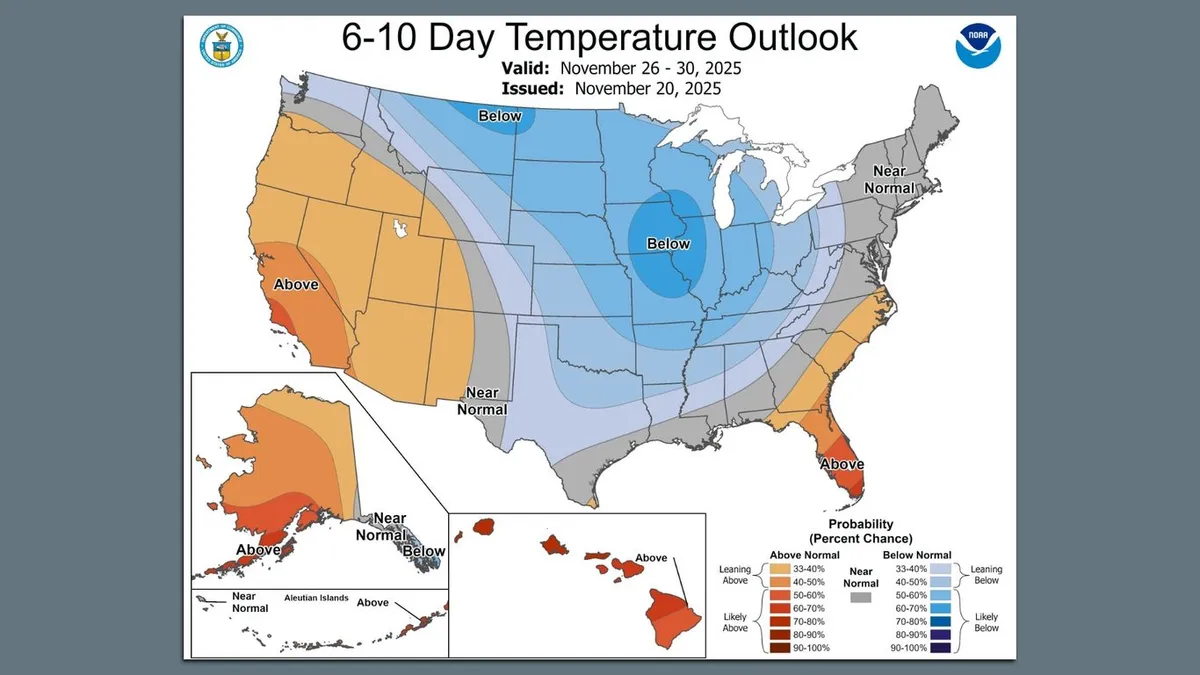
This year's Thanksgiving is expected to bring unusually cold temperatures and more snowfall across many regions in the United States, potentially disrupting what the AAA predicts to be record-breaking holiday travel. As millions prepare to celebrate with family and friends, the weather could pose significant challenges.
The National Weather Service (NWS) has issued warnings regarding the expansion of the polar vortex, a mass of cold air typically found around the Arctic. Forecasters predict that this cold air could push southward, combining with other weather patterns to create cooler than normal temperatures across a wide area. This includes major cities from Seattle to Dallas and extending to Chicago throughout Thanksgiving week.
According to the NWS, below normal temperatures are likely for the Central and Northern U.S. This encompasses northern sections of the Pacific Northwest, the Great Plains, parts of Texas, and the interior of the Mid-Atlantic. As travelers hit the road for their Thanksgiving holiday trips, the cold conditions could create hazardous driving situations.
In addition to the polar vortex, the forecast indicates that the Madden-Julian Oscillation—an eastward-moving pattern of clouds, rainfall, winds, and pressure—will play a significant role in this extreme weather event. Combined with the ongoing effects of La Niña, these factors are expected to produce winter-like conditions across much of the U.S. from late November into early December.
As nearly 82 million Americans are anticipated to travel during the Thanksgiving holiday, the timing of these frigid temperatures aligns with peak travel days. The TSA is preparing to screen an estimated 17.8 million air travelers starting Tuesday, with projections showing over 3 million travelers on Sunday alone. These travel statistics underscore the potential impact of the severe weather on holiday plans.
The NWS reports a moderate risk of heavy snow for the Central Rockies from November 29 to December 1, and for the Upper Great Lakes and Interior Northeast from November 29 to 30. This is largely due to the potential for lake-effect snow, which can significantly increase snowfall totals in certain areas. Broader slight risks for snowfall extend throughout much of the Rockies and the Northern Tier corridor, covering regions from the North Central U.S. to northern New England.
Cooler temperatures may persist well into mid-December over the northern tier of the country, creating challenges for post-Thanksgiving travel. As scientists continue to study the implications of climate change, there is growing interest in how polar vortex excursions may be becoming more frequent as global temperatures rise.
While the disruption of the stratospheric polar vortex is considered a natural phenomenon that occurs regularly during winter, meteorologists like Jeff Berardelli emphasize the importance of ongoing research into how factors such as climate change and Arctic amplification may influence these events. Understanding these dynamics is crucial for predicting future weather patterns and their potential impacts on daily life.
As the Thanksgiving holiday approaches, staying informed about the latest weather forecasts will be essential for all travelers. Prepare for potential weather-related disruptions, and ensure you have a safe travel plan in place.